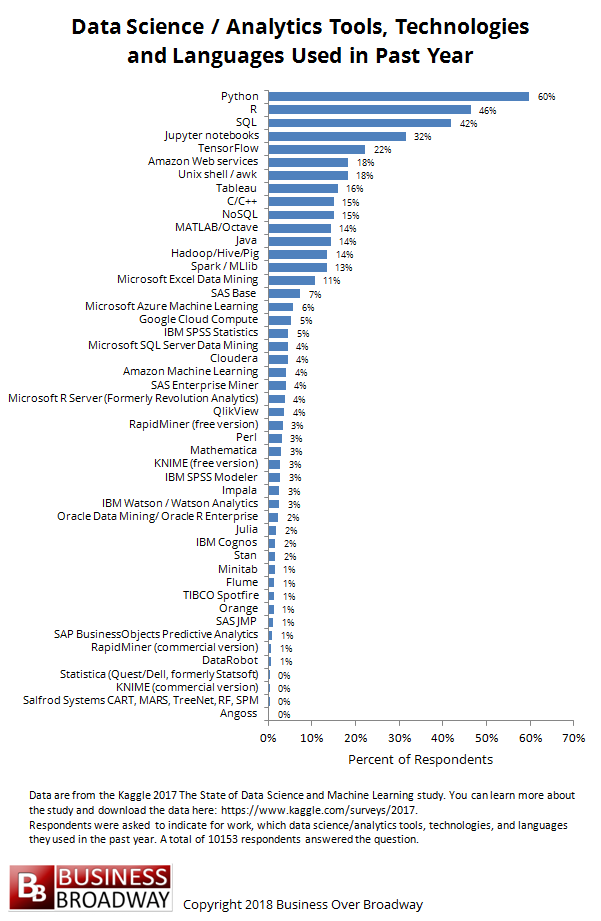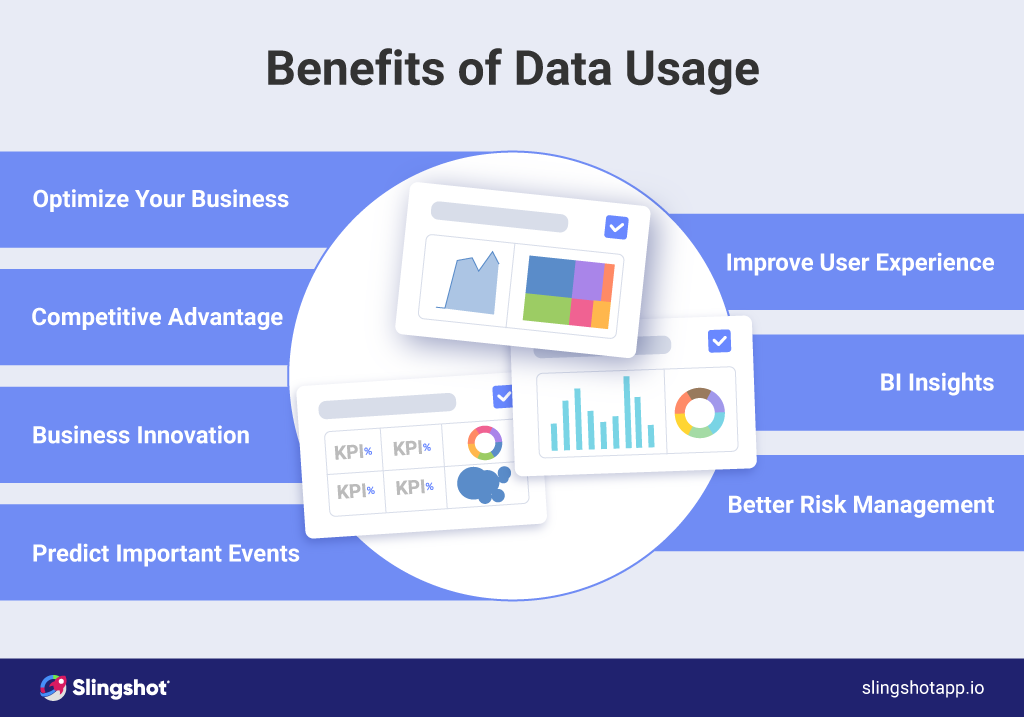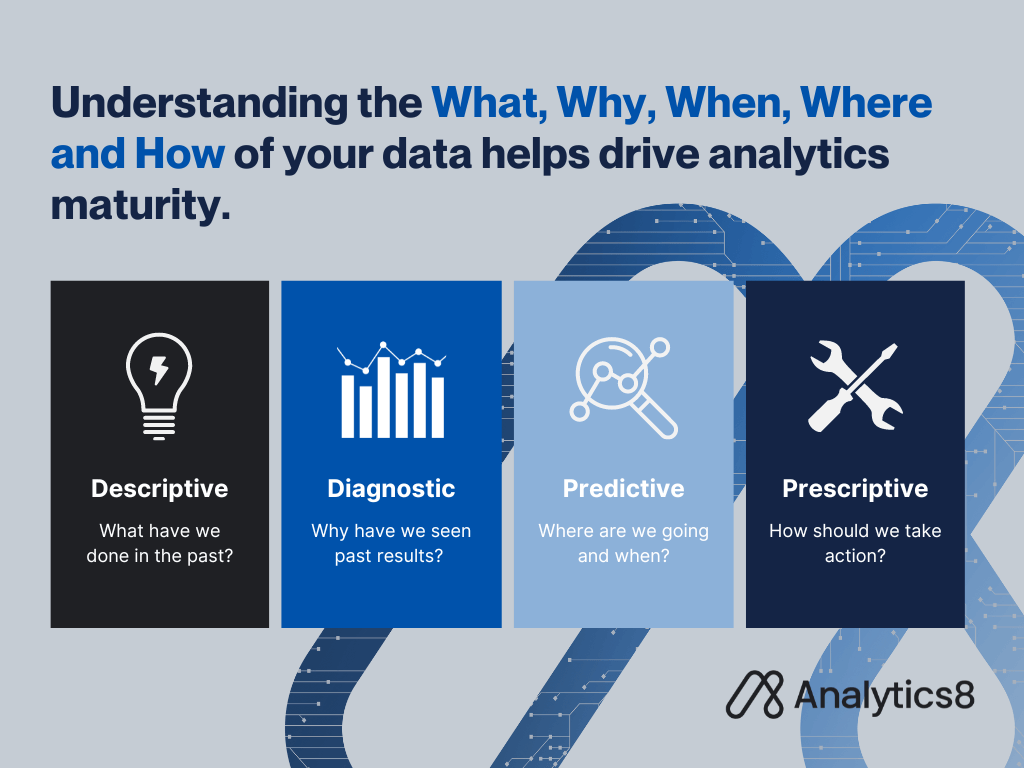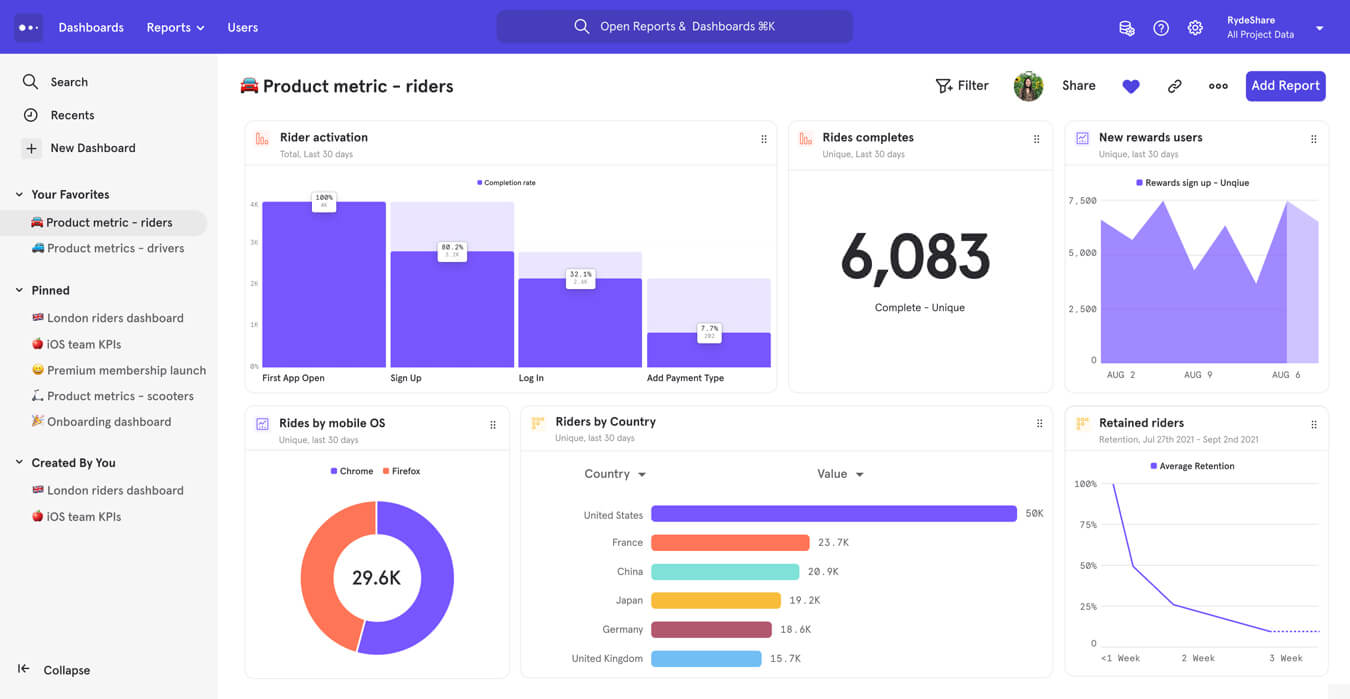What is the most complete tool for SAAS analytics?

In the rapidly evolving world of Software as a Service (SaaS), understanding user behavior, tracking performance metrics, and optimizing business strategies are critical for success. With countless analytics tools available, identifying the most comprehensive solution can be challenging. The ideal tool should offer robust data collection, real-time insights, customizable dashboards, and seamless integration with other platforms. It must cater to diverse needs, from monitoring customer acquisition and retention to analyzing revenue trends and product usage. This article explores the key features of top SaaS analytics tools, helping businesses determine which solution provides the most complete and actionable insights to drive growth and decision-making.
What is the Most Complete Tool for SAAS Analytics?
When it comes to SAAS analytics, businesses need a tool that offers comprehensive features to track, analyze, and optimize their performance. The most complete tool for SAAS analytics should provide real-time data, customizable dashboards, integration capabilities, and advanced reporting. Below, we explore the key aspects of such a tool and highlight the most relevant options available.
1. Key Features of a Complete SAAS Analytics Tool
A complete SAAS analytics tool should include features like user behavior tracking, revenue analytics, churn rate analysis, and customer segmentation. These features help businesses understand their customers better and make data-driven decisions. Additionally, tools should offer API integrations to connect with other platforms seamlessly.
2. Top SAAS Analytics Tools in the Market
Several tools stand out in the SAAS analytics space. Some of the most popular include Mixpanel, Amplitude, Google Analytics 360, Kissmetrics, and Pendo. Each of these tools offers unique features tailored to different business needs. For example, Mixpanel excels in event-based tracking, while Amplitude is known for its user journey analysis.
3. Importance of Real-Time Data in SAAS Analytics
Real-time data is crucial for SAAS businesses to respond quickly to market changes and customer needs. Tools like Google Analytics 360 and Pendo provide real-time insights, enabling businesses to monitor user activity, conversion rates, and engagement metrics as they happen.
4. Customizable Dashboards for Better Insights
Customizable dashboards allow businesses to focus on the metrics that matter most to them. Tools like Amplitude and Kissmetrics offer drag-and-drop interfaces to create personalized dashboards. This flexibility ensures that teams can track KPIs and performance indicators relevant to their goals.
5. Integration Capabilities with Other Platforms
A complete SAAS analytics tool should integrate seamlessly with other platforms like CRM systems, marketing automation tools, and customer support software. For instance, Pendo integrates with Salesforce and Slack, while Mixpanel connects with Zapier and Segment. These integrations streamline workflows and enhance data accuracy.
| Tool | Key Feature | Integration Example |
|---|---|---|
| Mixpanel | Event-based tracking | Zapier, Segment |
| Amplitude | User journey analysis | Salesforce, Slack |
| Google Analytics 360 | Real-time data | Google Ads, BigQuery |
| Kissmetrics | Customer segmentation | HubSpot, Mailchimp |
| Pendo | Customizable dashboards | Salesforce, Slack |
What is the most widely used analytics tool?

The most widely used analytics tool is Google Analytics. It is a powerful and free web analytics service offered by Google that tracks and reports website traffic, providing insights into user behavior, traffic sources, and conversion metrics. Its ease of use, integration with other Google services, and comprehensive features make it the go-to choice for businesses, marketers, and website owners worldwide.
Why is Google Analytics the Most Popular Analytics Tool?
Google Analytics dominates the analytics landscape due to its user-friendly interface, robust features, and cost-effectiveness. Here are some key reasons:
- Free Access: It offers a free version that is sufficient for most small to medium-sized businesses.
- Comprehensive Data: Tracks metrics like page views, bounce rates, session duration, and conversion rates.
- Integration: Seamlessly integrates with other Google tools like Google Ads, Search Console, and Data Studio.
Key Features of Google Analytics
Google Analytics provides a wide range of features that make it indispensable for data-driven decision-making. These include:
- Real-Time Reporting: Monitor live user activity on your website.
- Audience Insights: Understand user demographics, interests, and behavior.
- Custom Dashboards: Create personalized reports to focus on specific metrics.
How Does Google Analytics Work?
Google Analytics operates by embedding a tracking code on your website. This code collects data and sends it to Google's servers for processing. The process involves:
- Tracking Code Installation: A JavaScript code snippet is added to every page of your website.
- Data Collection: The code tracks user interactions like page views, clicks, and transactions.
- Data Processing: Google processes the data and organizes it into reports.
Industries That Benefit from Google Analytics
Google Analytics is versatile and benefits a wide range of industries. Some of the most notable include:
- E-commerce: Tracks sales, product performance, and customer behavior.
- Marketing: Measures campaign effectiveness and ROI.
- Publishing: Analyzes reader engagement and content performance.
Alternatives to Google Analytics
While Google Analytics is the most widely used, there are other tools available for specific needs. Some popular alternatives include:
- Adobe Analytics: Offers advanced features for enterprise-level businesses.
- Matomo: A privacy-focused, open-source analytics tool.
- Mixpanel: Focuses on user interaction and event tracking.
Which service would you use as a SaaS solution for data analytics?

What is a SaaS Solution for Data Analytics?
A SaaS (Software as a Service) solution for data analytics is a cloud-based platform that allows users to analyze, visualize, and interpret data without the need for on-premise infrastructure. These services provide tools for data integration, real-time analytics, and predictive modeling, making them ideal for businesses of all sizes.
- Scalability: Easily scale resources up or down based on data volume and business needs.
- Accessibility: Access data and analytics tools from anywhere with an internet connection.
- Cost-Effectiveness: Pay-as-you-go models reduce upfront costs and maintenance expenses.
Top SaaS Solutions for Data Analytics
Several SaaS platforms stand out for their robust data analytics capabilities. These include Tableau, Microsoft Power BI, Google Looker, Snowflake, and Domo. Each platform offers unique features tailored to different business needs.
- Tableau: Known for its advanced data visualization and user-friendly interface.
- Microsoft Power BI: Integrates seamlessly with other Microsoft products and offers strong reporting tools.
- Google Looker: Provides real-time data exploration and collaboration features.
Key Features to Look for in a SaaS Data Analytics Platform
When choosing a SaaS solution for data analytics, consider features like data security, customizable dashboards, machine learning integration, and collaboration tools. These features ensure the platform meets your business requirements.
- Data Security: Ensure the platform complies with industry standards like GDPR and HIPAA.
- Customizable Dashboards: Tailor dashboards to display key metrics and insights relevant to your business.
- Machine Learning Integration: Leverage AI-driven insights for predictive analytics and trend analysis.
Benefits of Using SaaS for Data Analytics
Using a SaaS solution for data analytics offers numerous benefits, including faster deployment, reduced IT overhead, and continuous updates. These advantages make SaaS platforms a preferred choice for modern businesses.
- Faster Deployment: Cloud-based solutions can be deployed quickly compared to traditional software.
- Reduced IT Overhead: The service provider handles maintenance, updates, and infrastructure management.
- Continuous Updates: Regular updates ensure access to the latest features and security patches.
How to Choose the Right SaaS Data Analytics Platform
Selecting the right SaaS platform depends on factors like business goals, data complexity, budget, and integration capabilities. Evaluate each platform based on these criteria to make an informed decision.
- Business Goals: Align the platform’s features with your organization’s objectives.
- Data Complexity: Ensure the platform can handle the volume and variety of your data.
- Budget: Compare pricing models to find a solution that fits your financial constraints.
What is the most advanced form of analytics?

The most advanced form of analytics is Predictive and Prescriptive Analytics, which combines machine learning, artificial intelligence (AI), and big data to not only forecast future outcomes but also recommend actionable steps to achieve desired results. This form of analytics goes beyond traditional descriptive and diagnostic analytics by leveraging real-time data processing, advanced algorithms, and automation to provide deeper insights and decision-making capabilities.
What is Predictive Analytics?
Predictive analytics uses historical data, statistical algorithms, and machine learning techniques to predict future events or behaviors. It is widely used in industries like finance, healthcare, and marketing to anticipate trends and make informed decisions. Key components include:
- Data Mining: Extracting patterns from large datasets.
- Machine Learning Models: Algorithms like regression, decision trees, and neural networks.
- Real-Time Analysis: Processing data as it is generated for immediate insights.
What is Prescriptive Analytics?
Prescriptive analytics takes predictive analytics a step further by recommending specific actions to achieve optimal outcomes. It uses optimization techniques, simulation models, and AI-driven decision-making to provide actionable insights. Applications include:
- Resource Allocation: Optimizing the use of resources like manpower and materials.
- Risk Management: Identifying and mitigating potential risks.
- Automated Decision Systems: Enabling real-time decision-making without human intervention.
How Does Machine Learning Enhance Advanced Analytics?
Machine learning plays a critical role in advanced analytics by enabling systems to learn from data and improve over time. It enhances predictive and prescriptive analytics through:
- Pattern Recognition: Identifying complex patterns in large datasets.
- Automation: Reducing the need for manual intervention in data analysis.
- Scalability: Handling massive amounts of data efficiently.
What Role Does Big Data Play in Advanced Analytics?
Big data is the foundation of advanced analytics, providing the volume, variety, and velocity of data needed for accurate predictions and prescriptions. Its importance lies in:
- Data Integration: Combining structured and unstructured data from multiple sources.
- Real-Time Processing: Enabling immediate analysis of streaming data.
- Data Quality: Ensuring accuracy and reliability for better insights.
What Are the Key Technologies Driving Advanced Analytics?
Several cutting-edge technologies are driving the evolution of advanced analytics, including:
- Artificial Intelligence (AI): Enabling intelligent decision-making and automation.
- Cloud Computing: Providing scalable infrastructure for data storage and processing.
- Internet of Things (IoT): Generating real-time data from connected devices.
What is SaaS analytics?

What is SaaS Analytics?
SaaS analytics refers to the process of collecting, analyzing, and interpreting data generated by Software as a Service (SaaS) applications. It involves using specialized tools and techniques to gain insights into user behavior, product performance, and business metrics. SaaS analytics helps companies make data-driven decisions, optimize their operations, and improve customer satisfaction.
Why is SaaS Analytics Important?
SaaS analytics is crucial for businesses because it provides actionable insights that drive growth and efficiency. Here are some key reasons why it matters:
- Improves decision-making: By analyzing data, businesses can make informed decisions about product development, marketing strategies, and customer engagement.
- Enhances customer experience: Understanding user behavior helps in tailoring services to meet customer needs and expectations.
- Boosts revenue: Identifying trends and patterns can lead to better pricing strategies and upselling opportunities.
Key Metrics in SaaS Analytics
In SaaS analytics, certain metrics are essential for evaluating performance and success. These include:
- Monthly Recurring Revenue (MRR): Tracks the predictable revenue generated each month.
- Customer Acquisition Cost (CAC): Measures the cost of acquiring a new customer.
- Churn Rate: Indicates the percentage of customers who stop using the service over a specific period.
Tools for SaaS Analytics
There are various tools available for SaaS analytics, each designed to address specific needs. Some popular options include:
- Google Analytics: Tracks website and app performance, including user engagement and conversion rates.
- Mixpanel: Focuses on user behavior analysis and event tracking.
- Tableau: Provides advanced data visualization and reporting capabilities.
Challenges in SaaS Analytics
While SaaS analytics offers numerous benefits, it also comes with challenges that businesses must address:
- Data integration: Combining data from multiple sources can be complex and time-consuming.
- Data accuracy: Ensuring the reliability and consistency of data is critical for meaningful analysis.
- Scalability: As businesses grow, managing and analyzing large volumes of data becomes increasingly difficult.
Frequently Asked Questions (FAQ)
What features should the most complete SAAS analytics tool include?
The most complete SAAS analytics tool should offer a wide range of features to help businesses track and optimize their performance. Key features include real-time data tracking, customizable dashboards, customer segmentation, and churn rate analysis. Additionally, it should provide revenue tracking, user behavior insights, and integration capabilities with other tools like CRMs and marketing platforms. Advanced tools may also include predictive analytics and AI-driven insights to forecast trends and identify growth opportunities.
How does a comprehensive SAAS analytics tool improve decision-making?
A comprehensive SAAS analytics tool enhances decision-making by providing data-driven insights that are accurate and actionable. It allows businesses to monitor key performance indicators (KPIs) in real-time, identify trends, and understand customer behavior. By leveraging customizable reports and visualizations, teams can make informed decisions about product development, marketing strategies, and customer retention. Furthermore, tools with predictive analytics help anticipate future challenges and opportunities, enabling proactive decision-making.
What are the benefits of using an all-in-one SAAS analytics platform?
Using an all-in-one SAAS analytics platform offers numerous benefits, including centralized data management, which eliminates the need for multiple tools. It provides a holistic view of business performance by integrating data from various sources. This leads to improved efficiency, as teams can access all necessary insights in one place. Additionally, such platforms often include automated reporting, reducing manual effort and ensuring consistency. The ability to scale with your business and adapt to changing needs is another significant advantage.
Which SAAS analytics tools are considered the most comprehensive in the market?
Some of the most comprehensive SAAS analytics tools in the market include Mixpanel, Amplitude, Google Analytics for SAAS, and ChartMogul. These tools are known for their robust feature sets, including user tracking, revenue analytics, and churn prediction. They also offer seamless integrations with other platforms, making them versatile for various business needs. When choosing a tool, it's essential to evaluate its scalability, ease of use, and support for advanced analytics to ensure it aligns with your business goals.
Deja una respuesta

Entradas Relacionadas